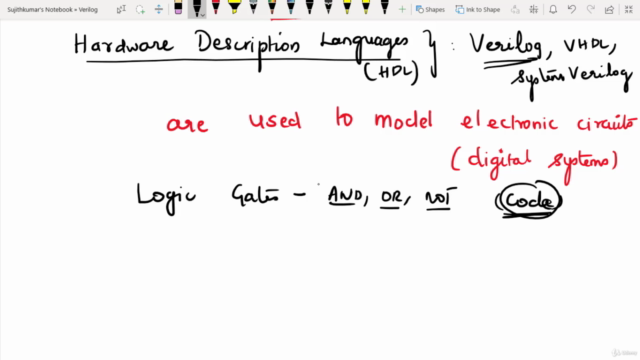Verilog HDL Through Examples

Why take this course?
🎓 Course Title: Verilog HDL Through Examples
🔥 Course Headline: Unleash Your Potential in Digital Circuit Design with Verilog HDL!
Hello, Future Digital Circuit Designers!
Are you ready to embark on a journey into the world of hardware design? If you're passionate about electronics and eager to dive deep into the realm of digital circuits, then this is the perfect course for you. Welcome to "Verilog HDL through Examples" - your comprehensive guide to mastering Verilog Hardware Description Language (HDL).
Why Choose Verilog HDL? 🧐
- Versatility: Verilog is a powerful tool used to describe any digital system, from microprocessors and memories to complex digital circuits like flip-flops.
- Modeling Abilities: With Verilog, you can model electronic components and generate their schematics, making it an indispensable resource for hardware engineers.
- Timing and Test Analysis: Verilog excels in providing precise timing and test analysis capabilities for your circuits.
Course Highlights 🌟
- Understanding the Differences: Grasp the distinctions between HDLs like Verilog, VHDL, and SystemVerilog and traditional programming languages such as C, C++, or Python.
- Fundamental Concepts: All fundamental concepts of Verilog are explained through the implementation of standard combinational and sequential circuits.
- Real-World Examples: Learn through practical examples that simplify complex ideas, making it easier to understand and apply Verilog in real-world scenarios.
- Comprehensive Theory: Each circuit implemented in Verilog is accompanied by a thorough theoretical explanation.
- Complete Testbenches: Develop testbenches for each design to ensure proper testing and validation of your work.
- Finite State Machines: Understand the creation and implementation of finite state machines using Verilog.
- Resource Access: Download the full code and design for each circuit in our resource section.
- Practical Tools: Get hands-on experience with EDA Playground for Verilog coding and EPWave for generating output waveforms.
- Key Concepts Explained: Dive into advanced Verilog topics like Levels of Abstraction, Two types of assignments, Producing delay, generating clock signals, and Procedural assignments.
🚀 What You Will Learn in This Course:
- Levels of Abstraction: Understand the different abstraction levels in Verilog, from the gate level to the system level, and how to effectively use them.
- Verilog Assignments: Master the two types of assignments available in Verilog - continuous and blocking assignments - and know when to use each.
- Timing and Delay: Learn how to simulate timing in your design by incorporating delay where necessary.
- Clock Generation: Create and manage clock signals within your designs, ensuring proper synchronization.
- Procedural Blocks: Gain proficiency in using procedural blocks for iterative processes and decision-making logic in Verilog.
📚 Resources at Your Fingertips
- Access to a rich collection of example circuits and code.
- Step-by-step instructions and explanations.
- Downloadable materials and design examples for hands-on practice.
- Expert guidance throughout the course to help you overcome any challenges.
Join me, Sujithkumar MA, on this transformative learning journey as we demystify the complexities of digital circuit design with Verilog HDL. Enroll in "Verilog HDL through Examples" today and take the first step towards becoming a proficient hardware designer! 👨💻✨
Course Gallery




Loading charts...